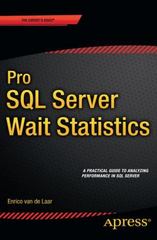Question
A) Recall the chmod program can be utilized to modify permissions on UNIX files. Refer to the lecture notes for the specific syntax for the
A) Recall the chmod program can be utilized to modify permissions on UNIX files. Refer to the lecture notes for the specific syntax for the command. Presume you have a file named myfile.sh that has the following permissions:
1. The user/owner has Read and Write permissions
2. The group owner has Read permissions
3. Everyone else ("other") has Read permissions
For instance, if using the ls -al command on UNIX the permissions might be represented by:
rw-r--r--
You subsequently run two commands:
chmod u+x,o-r myfile.sh
chmod g+x,o+x myfile.sh
What would be the new permissions "mode" be for myfile.sh? Please be careful to note that we are performing two commands here. Your answer should be a decimal number with three digits (for instance, 600 or 777). Each digit represents the decimal equivalent of one of the principals' permissions where a 1 bit represents having the permissions and a 0 bit represents NOT having the permission (that is, rwx = 111, rw- = 110).
B) Recall the chmod program can be utilized to modify permissions on UNIX files. Refer to the lecture notes for the specific syntax for the command. Presume you have a file named myfile.sh that has the following permissions:
1. The user/owner has Read and Write permissions
2. The group owner has Read permissions
3. Everyone else ("other") has Read permissions
For instance, if using the ls -al command on UNIX the permissions might be represented by:
rw-r--r--
You subsequently run the following command (please be careful to note the + and - symbols)
chmod u+x,g+x,o-r myfile.sh
What would be the new permissions "mode" for myfile.sh be? Your answer should be a decimal number with three digits (for instance, 600 or 777). Each digit represents the decimal equivalent of one of the principals' permissions where a 1 bit represents having the permissions and a 0 bit represents NOT having the permission (that is, rwx = 111, rw- = 110).
C) Recall the chmod program can be utilized to modify permissions on UNIX files. Refer to the lecture notes for the specific syntax for the command. Presume you have a file named myfile.sh that has the following permissions:
1. The user/owner has Read and Write permissions
2. The group owner has Read permissions
3. Everyone else ("other") has Read permissions
For instance, if using the ls -al command on UNIX the permissions might be represented by:
rw-r--r--
You subsequently run the following two commands (please be careful to note the + and - symbols, and note that the ORDER in which the commands are executed is important)
chmod 640 myfile.sh
chmod u+x myfile.sh
What would be the new permissions "mode" be for myfile.sh? Please be careful to note that we are performing two commands here. Your answer should be a decimal number with three digits (for instance, 600 or 777). Each digit represents the decimal equivalent of one of the principals' permissions where a 1 bit represents having the permissions and a 0 bit represents NOT having the permission (that is, rwx = 111, rw- = 110).
Step by Step Solution
There are 3 Steps involved in it
Step: 1

Get Instant Access to Expert-Tailored Solutions
See step-by-step solutions with expert insights and AI powered tools for academic success
Step: 2

Step: 3

Ace Your Homework with AI
Get the answers you need in no time with our AI-driven, step-by-step assistance
Get Started


